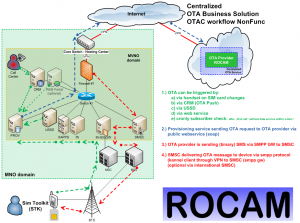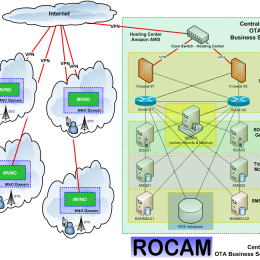Provisioning is the process by which a certain software client on a mobile device is configured with a minimum of user interaction. This can be done by provided data on a SIM card or by provisioning over the air (OTA). That means that needed parameters for WAP connectivity, for example, are pushed over the air from a server to the client of the mobile. The configuration message, specified by the provisioning framework, is encoded in binary XML (WBXML) send over the air as concatenated binary SMS and is handled by its respective client.
The OTACS (Over The Air Configuration Server) supports this functionality. lt is able to create an appropriate configuration message according to the client that needs to be configured. Supported configuration types by OTACS are:
- Internet configuration over GPRS or GSM/CSD
- Get manufacturer and type of handset based on TAC (IMEI)
First, certain configuration parameters are submitted using one HTTP-request to the web service by SOAP (Simple Object Access Protocol). Both the appropriate parameters and the MSISDN are defined. These received parameters are then transformed to a valid CM (Configuration Message) according to the type of conflguration and the mobile handset. This CM is then sent to the handset. lf a handset doesn’t support a configuration by a CM over the air, but supports however the appropriate feature, then a list of the necessary parameters for a manual configuration is provided to the AP (Application Provider).







